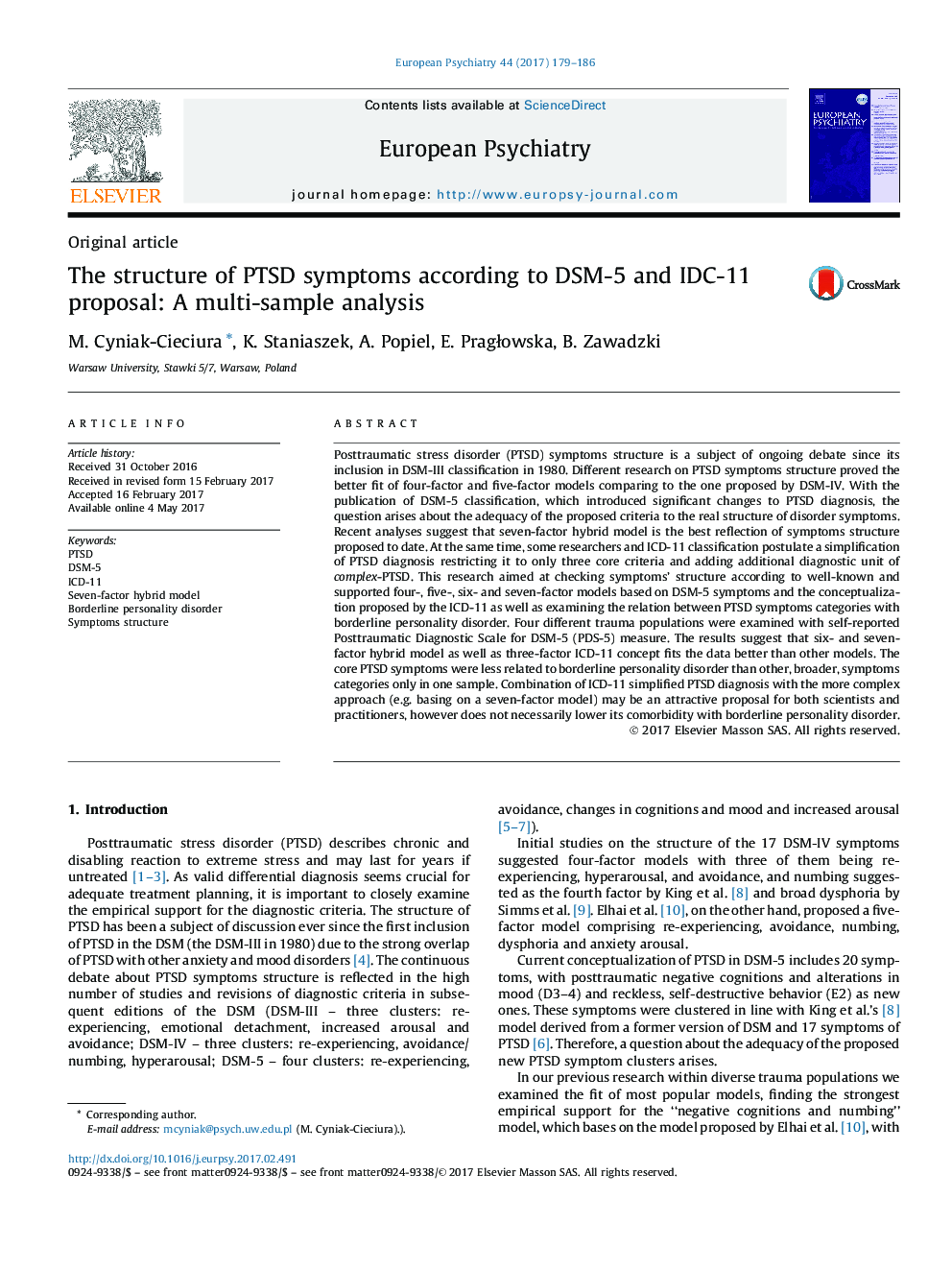| کد مقاله | کد نشریه | سال انتشار | مقاله انگلیسی | نسخه تمام متن |
|---|---|---|---|---|
| 5721406 | 1608046 | 2017 | 8 صفحه PDF | دانلود رایگان |

Posttraumatic stress disorder (PTSD) symptoms structure is a subject of ongoing debate since its inclusion in DSM-III classification in 1980. Different research on PTSD symptoms structure proved the better fit of four-factor and five-factor models comparing to the one proposed by DSM-IV. With the publication of DSM-5 classification, which introduced significant changes to PTSD diagnosis, the question arises about the adequacy of the proposed criteria to the real structure of disorder symptoms. Recent analyses suggest that seven-factor hybrid model is the best reflection of symptoms structure proposed to date. At the same time, some researchers and ICD-11 classification postulate a simplification of PTSD diagnosis restricting it to only three core criteria and adding additional diagnostic unit of complex-PTSD. This research aimed at checking symptoms' structure according to well-known and supported four-, five-, six- and seven-factor models based on DSM-5 symptoms and the conceptualization proposed by the ICD-11 as well as examining the relation between PTSD symptoms categories with borderline personality disorder. Four different trauma populations were examined with self-reported Posttraumatic Diagnostic Scale for DSM-5 (PDS-5) measure. The results suggest that six- and seven-factor hybrid model as well as three-factor ICD-11 concept fits the data better than other models. The core PTSD symptoms were less related to borderline personality disorder than other, broader, symptoms categories only in one sample. Combination of ICD-11 simplified PTSD diagnosis with the more complex approach (e.g. basing on a seven-factor model) may be an attractive proposal for both scientists and practitioners, however does not necessarily lower its comorbidity with borderline personality disorder.
Journal: European Psychiatry - Volume 44, July 2017, Pages 179-186